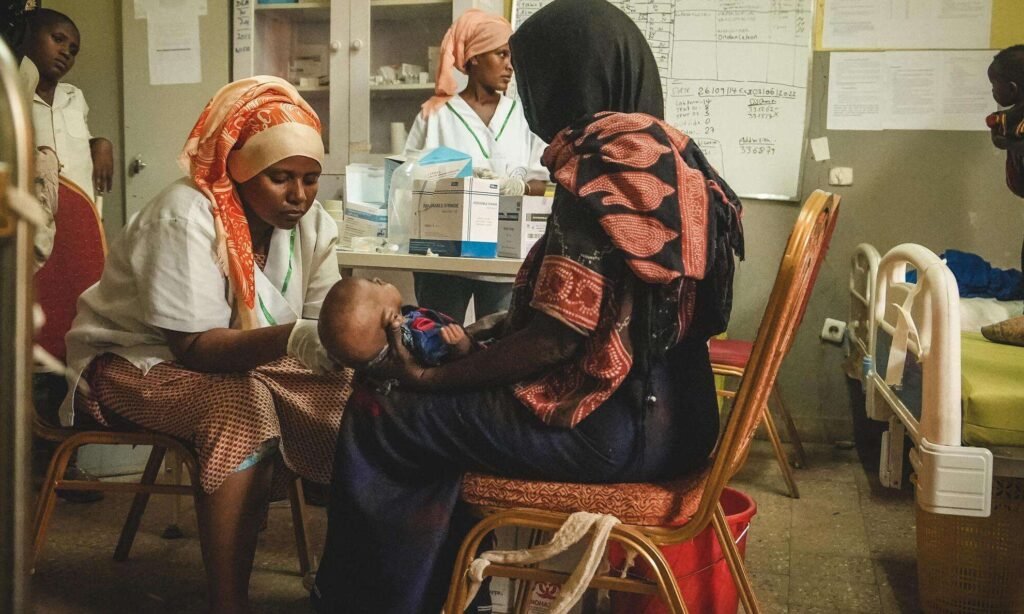Summary
- Somalia stands out as the only African nation where more than half of the population is malnourished, despite years of aid and humanitarian efforts.
- Even stable countries like Uganda and Kenya report malnutrition rates over 30%, indicating that food insecurity is influenced by factors beyond just conflict.
- Countries such as Zambia and Zimbabwe are experiencing rising malnutrition, not due to conflict but because of ineffective food systems and poor economic strategies.
In-Depth Analysis
Malnutrition here refers to long-term deficiencies that impact brain development, physical growth, and lifespan, rather than visible hunger alone. The Prevalence of Undernourishment (PoU) measures this issue, showing what percentage of a country’s population lacks necessary dietary energy over a three-year period.
This information is crucial, as it helps raise awareness about children’s vulnerability in various countries. Findings show that children under five are the most affected during times of food scarcity and low nutritional value. If a country has a PoU of 35%, it indicates that one in three children suffers from malnutrition.
10. Guinea-Bissau

Guinea-Bissau’s malnutrition rate is at 32.2%. The country’s food systems depend heavily on subsistence farming, with key crops including cashews, millet, and rice. However, factors like seasonal changes, limited irrigation, and lack of variety in diet hinder regular access to nutritious food. Despite partnerships aimed at improving maternal health and school nutrition, access to quality healthcare and nutritional education, particularly in rural regions, remains limited.
9. Kenya

Kenya, known for its vibrant youth and economy, faces significant challenges with a malnutrition rate of 34.5%, up from 26% a few years back. This increase is largely due to prolonged droughts, which have disrupted school programs and displaced families in arid regions covering over 38% of the country’s land.
8. Chad

With a malnutrition increase of 35.1%, up from 31.8% the previous year, Chad struggles with desertification and food shortages. The country’s breastfeeding initiation is among the lowest in Africa, contributing to poor nutritional outcomes for children. Many villages rely heavily on millet and sorghum, resulting in diminishing protein intake. Malnutrition stems not only from lack of food but also from deficiencies in nutrition education.
7. Zambia

Despite its wealth in natural resources and arable land, Zambia faces malnutrition challenges, now at 35.4% compared to 33.9% previously. Food becomes increasingly inaccessible due to inflation and losses after harvesting. In regions like Eastern Province, students often subsist on diluted porridge, missing out on essential meals. As climate conditions become more erratic, rural households face threats to their food security, currently at 14% year-round.
6. Uganda

While Uganda boasts a stable political environment, it struggles with food accessibility. The current malnutrition rate of 36.9% marks a significant increase from 20.4% a decade ago, highlighting deteriorating food access conditions. In the Karamoja region, malnutrition is addressed as a chronic issue requiring urgent health interventions. Furthermore, protein-rich foods have become unaffordable for many families in Kampala, where food prices have surged by 70% in the last year.
5. Democratic Republic of the Congo

Known for its fertile but underutilized agricultural land, the Democratic Republic of the Congo (DRC) sees 37% of its populace classified as undernourished despite various humanitarian efforts. Ongoing conflicts in some areas affect food security, leaving over 27 million individuals struggling with hunger. Issues such as armed conflicts, displacement, and poor infrastructure make farming and food distribution incredibly challenging, even with over 80 million hectares of arable land. In certain regions, one in two children under five suffers from malnutrition.
4. Zimbabwe

Despite a slight decrease from 39.5% to 38.1%, Zimbabwe’s malnutrition rate indicates a persistent crisis. Since 2020, inflation has drastically increased food prices, making locally grown maize unattainable for many families. Reports from NGOs reveal that children in regions like the Midlands and Masvingo often rely on wild fruits and fermented drinks like maheu for sustenance. In urban areas such as Harare, one in four households struggles to afford a complete meal.
3. Liberia

In Liberia, some regions are experiencing ongoing malnutrition issues following the Ebola outbreak and civil conflicts. The malnutrition rate stands at 38.4%, marking a slight increase from the previous figure of 37.5%. The rising cost of imported rice has made it difficult for many families, who rely heavily on it. Additionally, breastfeeding practices are alarmingly low; over 60% of infants under six months are not exclusively breastfed, and some have started consuming starchy foods within their first year.
2. Madagascar

Madagascar faces a rising hunger crisis alongside its rich biodiversity. The malnutrition rate is now at 39.7%, up from 37.6%, primarily due to frequent cyclones and droughts that damage water sources and crops. In Southern Madagascar, a climate-induced food shortage has led some children to rely on tamarind soup and cactus as staple foods.
1. Somalia

Somalia ranks first not only in Africa but also worldwide, with a malnutrition rate of 51.3%, slightly up from 51.1% previously. This statistic indicates that more than half of the population experiences malnutrition. Although aid has reached some urban areas, communities inland remain cut off from humanitarian assistance due to militant control. As a result, many children in Somalia are raised on emergency food programs and rationed supplies.


